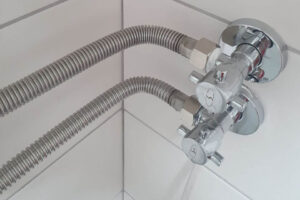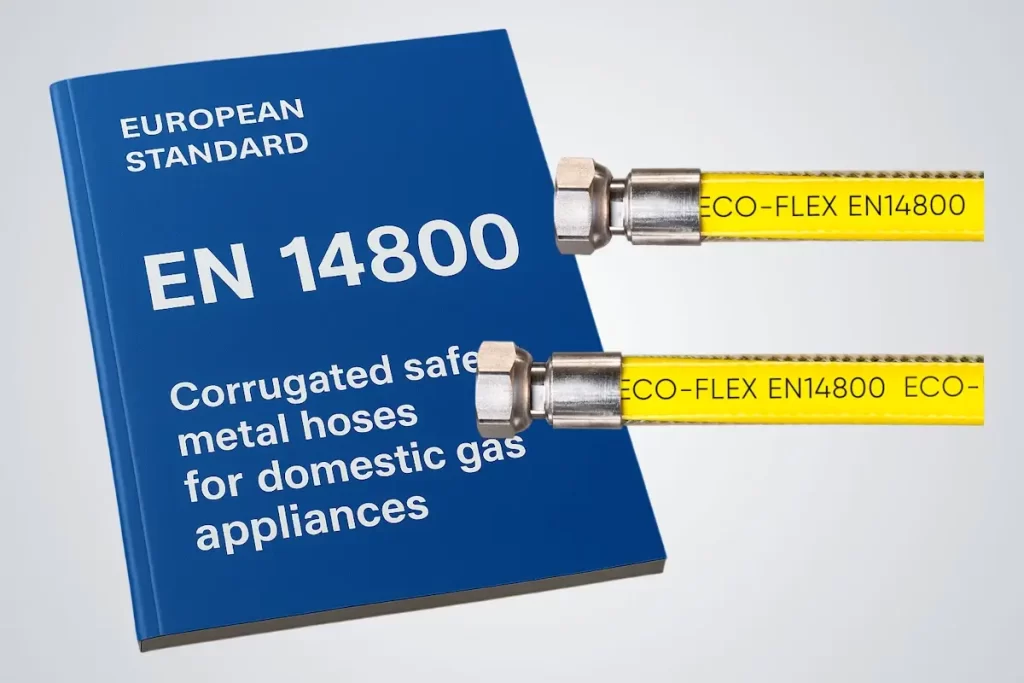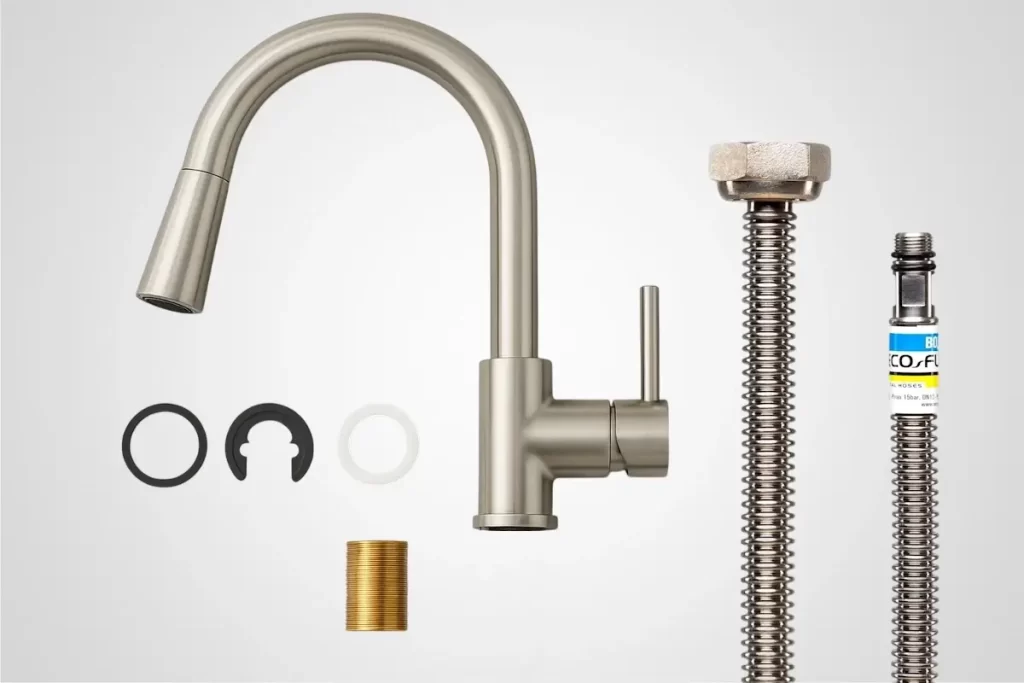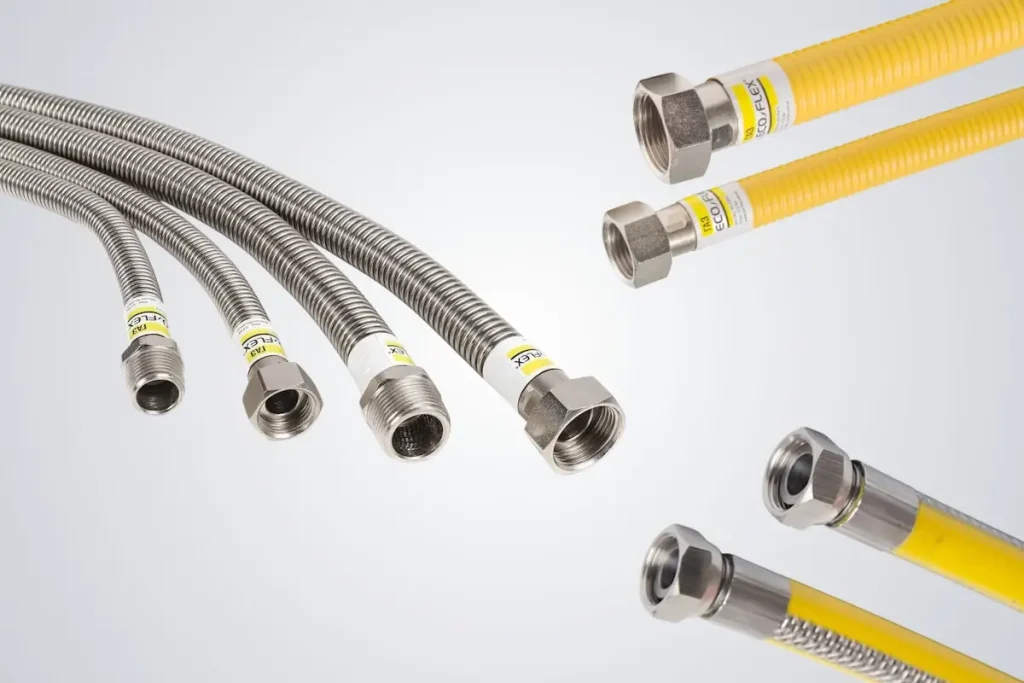 Correct installation of hoses is the key to the efficient and safe operation of the entire system. Regardless of whether it is gas supply, water supply, heating or industrial processes, installation must be carried out in compliance with technical standards and usage of appropriate fittings.
Correct installation of hoses is the key to the efficient and safe operation of the entire system. Regardless of whether it is gas supply, water supply, heating or industrial processes, installation must be carried out in compliance with technical standards and usage of appropriate fittings.
It would seem that there could be anything difficult in installing the hose and tightening the nuts? Indeed, nothing difficult – but only if you understand at least the “basics” of this work. Because when installing a flexible liner, you can make many mistakes. For more information about the most common mistakes, see our short infographic.
Main stages of hose installation
- Selection of a hose. Select a hose of the appropriate diameter, pressure and temperature conditions, taking into account the specifics of the environment (water, gas, steam, chemicals).
- Compliance with the minimum bending radius. Each type of hose has a recommended minimum bending radius. Bending the hose less than the permissible radius leads to excessive load on the walls of the hose, which can lead to destruction, reduced throughput and reduced service life. Avoid sharp corners when laying the hose. Our hoses can be bent with a radius of at least two external diameters. It is recommended to bend and shape the hose immediately before installation.
- Correct length. Choose a hose of the appropriate length. A hose that is too short will be subject to excessive tension, which may cause damage or leakage. A hose that is too long may become tangled, kinked or obstructed. Allow for possible movement of system components during operation.
- Inspection and preparation. Before installation, check for damage or defects, and clean the connecting components.
- Avoid distortion. Avoid distortion of the hose during installation. This creates internal stress and may cause rupture.
- Reliable connection. Ensure a tight and secure connection between the hose and the fittings or nozzles. Use appropriate sealing materials (gaskets, FUM tape, anaerobic sealant) where it is specified by the design.
- Tightening connections. Tighten nuts or clamps with appropriate force. Excessive tightening can damage the thread or fitting, and insufficient tightening can lead to leakage. For some types of connections, it is recommended to use a torque wrench.
- Avoiding tension. After connecting, the hose should not be tensioned. Leave a small reserve of length to compensate for possible movements or temperature changes.
- Installation of fittings. Use only certified fittings compatible with the hose material. The tightness of the connection is a key safety factor.
- Tightness test. After connection, test the system under operating pressure, check the connection for leaks.
Features of installing different types of hoses
High-pressure metal hoses (HPH)
When working with HPH, it is especially important to strictly adhere to the permissible operating pressure and minimum bending radius. Incorrect installation of HPH can lead to serious injuries due to high fluid pressure. Consider dynamic loads and possible water hammer in the system. When laying HPH on moving mechanisms, make sure that the hose length is sufficient for the entire range of motion and the hose does not bend in critical places.
Flexible hoses for mixers
Before installation, check the integrity of the threads on the hose and mixer/pipeline. Use new sealing gaskets. Tighten the nuts by hand, then carefully tighten with a wrench, controlling the force so as not to damage the connection. Avoid twisting the hoses during installation. Make sure that the faucet hose is not kinked or touches hot surfaces after installation.
Gas Hoses
When installing gas hoses (flexible gas connections), extremely strict safety regulations must be followed, since improper installation can lead to gas leakage, fire or explosion. Work related to connecting gas equipment and installing gas hoses in many countries and regions must be carried out exclusively by certified gas technicians or licensed plumbers who have permission to carry out such work.
Remember, independent intervention in the gas supply system is dangerous!
If you are still dealing with the installation of a gas hose (for example, when replacing an old flexible supply line to a gas stove, where this is permitted by safety regulations and you have the appropriate skills), pay attention to the following features:
- it is prohibited to stretch or twist the hose;
- it is important to use sealing gaskets that do not deteriorate under the influence of gas. These are the ones included with Eco-Flex gas hoses;
- connections must be checked for leaks with a soap solution or a special spray tester for gas leaks a.
Never check for gas leaks with an open flame!
Tips for long-term operation
- Avoid kinks and twists.
- Do not exceed the recommended pressure and temperature parameters.
- Check the condition of the hoses regularly and replace them at the first signs of wear.
Our company not only offers high-quality stainless steel hoses and metal sleeves, but also provides professional advice on proper installation. Contact us – we will help ensure the reliability of your system from the first day of operation!


